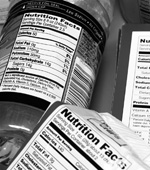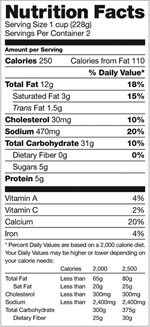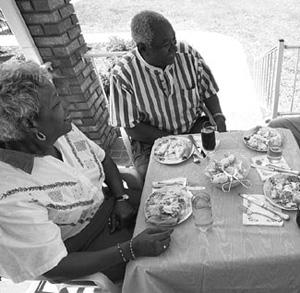
 |

|



(601KB)

|
|
|
|

Being physically active and eating well may
help you stay fit and feel fabulous over the
years. If you are overweight or inactive, you may
have a higher risk for:
- type 2 diabetes (high blood sugar)
- high blood pressure
- coronary heart disease
- stroke
- certain forms of cancer
No matter what your age, you may be able to
improve your health if you Move More and Eat
Better! This booklet gives you tips on how
to get moving and eat well throughout your
life.
top
|
|
|
Being physically active and making smart food
choices is good for your health. In addition to
improving your physical health, moving more and
eating better may also:
- Give you more energy.
- Reduce stress.
- Help you feel better about yourself.
- Relieve boredom or depression.
- Set an example for your family.
Your family and friends can be great sources
of motivation and support as you adopt a
healthier lifestyle. Ask them to join you in
healthy eating and physical activity—it is
important for them, too! By making healthy
choices together, it may be easier to eat right
and be active.
top
|
|
|
 Try to do at least 30 minutes of
moderate-intensity physical activity (like brisk
walking) on most or all days of the week. Try to do at least 30 minutes of
moderate-intensity physical activity (like brisk
walking) on most or all days of the week.
Also try to do strengthening activities two or
three times a week. These activities are
important because older adults—especially
women—lose muscle and bone every year.
Strengthening activities may help prevent or
lessen this loss.
Fitting in physical activity is not as hard as
you may think, and you do not have to do the
whole 30 minutes at one time. Try these tips to
overcome things that may keep you from being
active.
“It’s too late for me to
get physically active.”
It is never too late to start moving more.
Physical activity may help you manage health
problems like arthritis, osteoporosis (bone
loss), and coronary heart disease. It may also
help:
- Keep your body flexible.
- Keep your bones and muscles strong.
- Keep your heart and lungs healthy.
- Control high blood sugar, especially if you
lose weight.
- Let you keep living in your own home
without help.
TIP: If you are over age 50 or
have chronic health problems such as coronary
heart disease, high blood pressure, diabetes,
osteoporosis, or obesity, talk to your health
care provider before starting a
vigorous physical activity
program. You do not need to talk to your
provider before starting a less strenuous
activity like walking.

“Physical activity is a
chore.”
Physical activity can be fun—you just
need to figure out which activities you enjoy.
The more enjoyable it is, the more likely you are
to stick with it. Some ideas include:
- Walking or taking an exercise class with a
friend or a group—that way, you can cheer
each other on, have company, and feel safer
when you are outdoors.
- Starting a small garden in your yard or in
a community garden.
- Breaking physical activity into short
blocks of time—taking three 10-minute
walks during your day may be easier than taking
one 30-minute walk.
- Doing different activities throughout the
week to stay interested.
- If you are not comfortable being active
outdoors because of safety concerns, consider
joining your local recreation or fitness center
or going to a relative’s neighborhood to
walk.
 “It’s too
expensive.” “It’s too
expensive.”
There are lots of ways to be
physically active that are free or low-cost.
Consider:
- Finding a local park or school track where
you can walk.
- Walking around a mall.
- Being active with your
grandchildren—take a walk, toss a
softball, or ride bikes.
- Walking your dog or meeting up with a
neighbor to walk together.
- Checking out a fitness video from the
library and following along at home.
“I don’t have enough
time.”
No matter how busy you are, there are ways to
fit in 30 minutes or more of physical activity
each day. Try:
- Spreading physical activity throughout the
day, rather than doing it all at once.
- Setting aside time to be active. For
instance, if you make it part of your daily
routine to walk after breakfast, you may not
think twice about doing it.
- Walking to do your errands, when
possible.
- Being active while doing other things. For
example, you can lift weights or march in place
while watching TV, or walk around your home
while talking on a cordless telephone.
“I’m
not an athlete, so why strength
train?”
Strengthening activities are good for
everyone—and there are ways to become
stronger without lifting weights. Strength
training may help you perform your daily
activities with more ease. Consider:
- Doing step-ups or wall push-ups in the
comfort of your own home.
- Using canned foods or filled water bottles
as weights.
- Walking up stairs—lifting your body
weight strengthens your legs and hips.
TIP: To avoid injury, it is
important to use good form when you do
strengthening activities. You can learn about
proper form in Growing Stronger, a
strength training program for older adults. See
the “Additional Resources” section
at the end of this publication for more
information.
top
|
|
|

To eat better, try to consume plenty of
fruits and vegetables, whole grains, fat-free
or low-fat milk and milk products, and lean
meat, poultry, and fish. Also, try to limit the
amount of fat, sugar, and salt you eat. Try
these tips to eat better, save time, and
stretch your food budget.
Simple Ideas for Eating
Well
- Start every day with breakfast. Try
oatmeal, a whole-grain cereal like raisin
bran with fat-free or low-fat milk,
whole-wheat toast spread with jam, or
fat-free or low-fat yogurt. Enjoy some fruit
with your breakfast too.
- Try kidney or butter beans in hot dishes,
on salads, or plain. Protein is important to
your health as you age. Beans are loaded with
protein and cost less than meat.
- Choose fat-free or low-fat milk, yogurt,
and cheese instead of full-fat dairy
products.
- Choose whole-grain foods like whole-wheat
bread, oatmeal, brown rice, and whole-wheat
pasta more often than refined-grain foods
like white bread, white rice, and white
pasta. Whole-grain foods offer dietary fiber,
which helps keep you regular.
- Do not let sweets like cookies, candy, or
soda crowd out healthy foods.
TIP: If you cannot digest
lactose (the sugar found in milk) try
fat-free or low-fat lactose-reduced milk. Or
try fat-free or low-fat yogurt or hard
cheeses like cheddar, which may be easier to
digest than milk. You can also get calcium
from calcium-fortified juices, soy-based
beverages, and cereals. Eating dark leafy
vegetables like collard greens and kale, and
canned fish with soft bones like salmon, can
also help you meet your body’s calcium
needs.
 Make Healthy
Meals That Taste Good Make Healthy
Meals That Taste Good
You may like the taste of fried foods and
fatty meats, but if you eat them too often or
in large amounts you may consume too much
saturated fat, which is not healthy for your
heart. There are other ways you can add flavor
to your food. Try:
- Baking, roasting, broiling, grilling, or
oven-frying chicken or fish—season with
herbs, spices, lemon, lime, or vinegar (but
not salt).
- Cooking collard greens or kale with
onions, garlic, chicken broth, bouillon,
smoked turkey, turkey bacon, or turkey ham
(use broth, bouillon, and cured meats in
small amounts because they are high in
sodium, or buy low-sodium versions of
them).
- Topping baked potatoes with salsa or
low-fat sour cream.
- Making salads and casseroles with low-fat
or fat-free salad dressing or mayonnaise,
flavored vinegar like balsamic, or a small
amount of mustard (but remember that mustard
is high in sodium).
Save Time and Money When You
Cook
You do not have to spend a lot of time in
the kitchen or a lot of money to eat well.
- Cook enough to last. Casseroles, meat
loaf, and whole cooked chicken may last for
several days. (Be sure to freeze or
refrigerate leftovers right away to keep them
safe to eat).
- Buy frozen or canned vegetables (no salt
added) and canned fruit packed in juice. They
are just as good for you as fresh produce,
will not go bad, and make quick and easy
additions to your meals.
- If your local store does not have the
foods you want or their prices are too high,
go to another store. Start a weekly shopping
carpool, share the cost of a taxi with
friends, or ask a relative or neighbor for a
ride.
top
|
|
|

Food labels may help you make healthy food
choices, but they can be confusing.* Here are
some quick tips for reading food labels:
Check Serving Size and
Calories: All the information on a food
label is based on the serving size. Be
careful—one serving may be much smaller
than you think. If you double the servings you
eat, you double the calories and nutrients,
including the percent Daily Values (DVs).
Percent DV: This number tells
you whether a food is high or low in nutrients.
Foods that have more than 20-percent DV of a
nutrient are high. Foods that have 5-percent DV
or less are low.
Saturated Fat: Saturated fat
is not healthy for your heart. Compare labels on
similar foods and try to choose foods that have
5-percent DV or less for saturated fat. Most of
the fats you eat should be polyunsaturated and
monounsaturated fats. Keep total fat intake
between 20 percent to 35 percent of your total
daily calories.
Trans
Fat: Trans fat is not
healthy for your heart. When reading food labels,
add together the grams of trans fat and
saturated fat, and choose foods with the lowest
combined amount.
 Cholesterol:
Too much cholesterol is not healthy for your
heart. Keep your intake of saturated fat,
trans fat, and cholesterol as low as
possible. Cholesterol:
Too much cholesterol is not healthy for your
heart. Keep your intake of saturated fat,
trans fat, and cholesterol as low as
possible.
Sodium (Salt): Salt contains
sodium. Research shows that eating less than
2,300 milligrams of sodium (about 1 teaspoon of
salt) per day may reduce the risk of high blood
pressure.
TIP: Many food labels say
“low-fat,” “reduced fat,”
or “light.” These claims do not
always mean the food is low in calories, however.
Remember, fat-free does not mean calorie-free,
and calories do count!
Fiber: Choose foods that are
rich in fiber, such as whole grains, beans,
fruits, and vegetables.
Sugar: Try to choose foods
with little or no added sugar, such as low-sugar
cereals.
Calcium: Choose foods that
are high in calcium. Foods that are high in
calcium have at least 20-percent DV.
* For more
information on reading food labels, visit:
www.cfsan.fda.gov/labelman.
For information about the 2005 Dietary
Guidelines for Americans, see: www.healthierus.gov/dietaryguidelines.
top
|
Keeping Track of Serving
Sizes
|
 Many
people think that bigger is better. We are so
used to value-sized portions—especially in
restaurants—that it can be easy to eat more
than our bodies need. Eating smaller portions
will help you cut down on calories and fat (and
might save you money too). Here is a
1,600-calorie per day sample menu with sensible
portion sizes:* Many
people think that bigger is better. We are so
used to value-sized portions—especially in
restaurants—that it can be easy to eat more
than our bodies need. Eating smaller portions
will help you cut down on calories and fat (and
might save you money too). Here is a
1,600-calorie per day sample menu with sensible
portion sizes:*
Breakfast
1/2 cup
oatmeal
1 English muffin with 1 tablespoon low-fat cream
cheese
1 cup low-fat milk
3/4 cup orange juice
Lunch
2 ounces baked chicken without skin (a little
smaller than a deck of cards)
Lettuce, tomato, and cucumber salad with 2
teaspoons oil and vinegar dressing
1/2 cup rice seasoned with 1/2 teaspoon tub or
liquid margarine
1 small whole-wheat roll with 1 teaspoon
margarine
Dinner
3 ounces lean roast beef (about the size of a
deck of cards) with 1 tablespoon beef gravy
1/2 cup turnip greens seasoned with 1/2 teaspoon
margarine
1 small baked sweet potato with 1/2 teaspoon
margarine
1 slice cornbread
1/4 honeydew melon
Snack
2 1/2 cups low-fat microwave popcorn
1 1/2 teaspoons margarine
* Adapted from National Heart,
Lung, and Blood Institute (NHLBI) sample
menus.
TIP: Use tub or liquid margarine
instead of butter. Choose a soft margarine that
has less than 2 grams of saturated fat per
tablespoon and has 0 grams of trans fat.
“Liquid vegetable oil” should be
first on the ingredient list. (American Heart
Association)
TIP: Try keeping a food diary.
Writing down what you eat, when you eat, and how
you feel when you eat can help you understand
your eating habits. You may be able to see ways
to make your eating habits healthier. You can
also use your diary to plan weekly menus, make
shopping lists, and keep track of recipes you
would like to try. For more information about
keeping a food diary, read the Weight-control
Information Network (WIN) brochure Just
Enough for You: About Food Portions.
top
|
|
|
In real life, you cannot always cook your
meals. Here are some ways to make healthy choices
when you are away from home:
- Use a small plate at social functions to
help keep you from eating too much.
- At restaurants, order a half portion, share
a meal with a friend, or take half of your
order home for another meal.
- Balance your meals throughout the day. If
you have a high-fat or high-calorie breakfast
or lunch, make sure you eat a low-fat dinner.
If you know you will be having a higher fat
dinner, make lower fat choices earlier in the
day.
top
|
|
|
 Set goals, and move at your
own pace to reach them. Ask your family and
friends to help you. They can encourage you, help
you with setbacks, and be there to celebrate your
successes! Set goals, and move at your
own pace to reach them. Ask your family and
friends to help you. They can encourage you, help
you with setbacks, and be there to celebrate your
successes!
No matter what, keep trying—you can do
it!
top
|
|
|
Energize Yourself and
Your Family. NIH Publication No.
04–4926.
Just Enough for You: About Food
Portions. NIH Publication No.
03–5287.
Walking...A Step in the Right
Direction. NIH Publication No.
07–4155.
top
|
|
|
Growing Stronger: Strength
Training for Older Adults. This
exercise program, developed by the Centers for
Disease Control and Prevention and Tufts
University, describes how to strength train
safely. It illustrates and describes a variety of
exercises that can be performed at home.
Internet:
www.cdc.gov/nccdphp/dnpa/physical/growing_stronger
National Diabetes Education
Program (NDEP). Publications from
NDEP provide information about diabetes and
obesity prevention and control. NDEP’s
publications catalog also offers resources
specifically for African Americans.
Internet:
www.ndep.nih.gov/diabetes/pubs/catalog.htm
Phone: (301) 496–3583
MyPyramid. This
interactive website from the U.S. Department of
Agriculture has detailed information about
healthy eating and physical activity and allows
you to create a personalized eating and activity
plan.
Internet: www.mypyramid.gov
Phone: 1–888–7–Pyramid;
1–888–779–7264
top
|
|
|
Heart-Healthy Home Cooking African
American Style. National Institutes of
Health (NIH) Publication No. 97–3792, 1997.
This pamphlet tells how to prepare your favorite
African-American dishes in ways that will help
protect you and your family from heart disease
and stroke, and includes 20 tested recipes.
Available from the NHLBI for $3.00; call (301)
592–8573 or (240) 629–3255 (TTY) or
download for free at:
www.nhlblnih.gov\health\public\heart\other\chdblack\cooking.pdf.
Down Home Healthy
Cookin’.
National Cancer Institute (NCI), reprinted 2006.
This pamphlet features 12 recipes for traditional
African-American foods modified to be low in fat,
high in fiber, and tasty to eat. Available free
from NCI; call 1–800–4–CANCER
or 1–800–332–8615 (TTY).
top
Weight-control Information
Network
1 WIN Way
Bethesda, MD 20892–3665
Phone: (202) 828–1025
Toll-free number:
1–877–946–4627
Fax: (202) 828–1028
Email: win@info.niddk.nih.gov
Internet: www.win.niddk.nih.gov
The Weight-control Information Network (WIN)
is a service of the National Institute of
Diabetes and Digestive and Kidney Diseases
(NIDDK) of the National Institutes of Health,
which is the Federal Government’s lead
agency responsible for biomedical research on
nutrition and obesity. Authorized by Congress
(Public Law 103–43), WIN provides the
general public, health professionals, the media,
and Congress with up-to-date, science-based
health information on weight control, obesity,
physical activity, and related nutritional
issues.
Publications produced by WIN are reviewed by
both NIDDK scientists and outside experts. This
publication was also reviewed by Steven Blair,
P.E.D., Professor, Department of Exercise
Science, Arnold School of Public Health,
University of South Carolina, and Ellen Feiler,
M.S., Health Education Director, Broward County
Health Department, Florida Department of
Health.
This publication is not copyrighted. WIN
encourages users of this brochure to duplicate
and distribute as many copies as desired.
|
|
|


|
NIH Publication No. 03–4927
January 2003
Revised May 2007
e-text posted September 2007
|
|
|




 Try to do at least 30 minutes of
moderate-intensity physical activity (like brisk
walking) on most or all days of the week.
Try to do at least 30 minutes of
moderate-intensity physical activity (like brisk
walking) on most or all days of the week.
 “It’s too
expensive.”
“It’s too
expensive.”
 Make Healthy
Meals That Taste Good
Make Healthy
Meals That Taste Good
 Cholesterol:
Too much cholesterol is not healthy for your
heart. Keep your intake of saturated fat,
trans fat, and cholesterol as low as
possible.
Cholesterol:
Too much cholesterol is not healthy for your
heart. Keep your intake of saturated fat,
trans fat, and cholesterol as low as
possible. Many
people think that bigger is better. We are so
used to value-sized portions—especially in
restaurants—that it can be easy to eat more
than our bodies need. Eating smaller portions
will help you cut down on calories and fat (and
might save you money too). Here is a
1,600-calorie per day sample menu with sensible
portion sizes:*
Many
people think that bigger is better. We are so
used to value-sized portions—especially in
restaurants—that it can be easy to eat more
than our bodies need. Eating smaller portions
will help you cut down on calories and fat (and
might save you money too). Here is a
1,600-calorie per day sample menu with sensible
portion sizes:* Set goals, and move at your
own pace to reach them. Ask your family and
friends to help you. They can encourage you, help
you with setbacks, and be there to celebrate your
successes!
Set goals, and move at your
own pace to reach them. Ask your family and
friends to help you. They can encourage you, help
you with setbacks, and be there to celebrate your
successes!